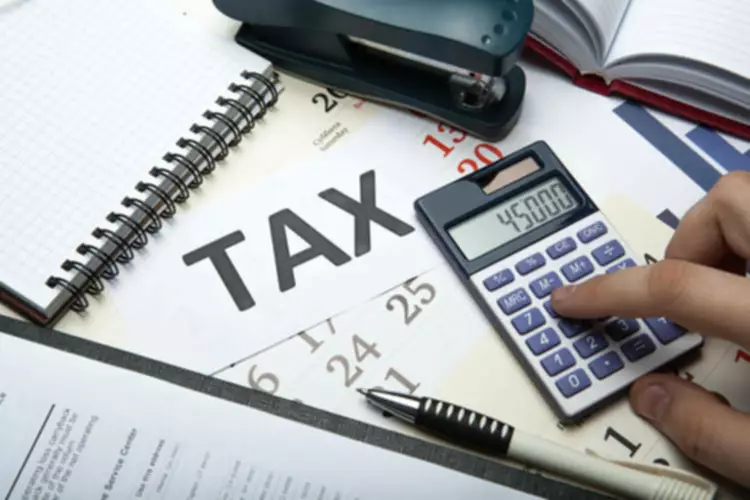Content

We can help you get time to focus on business strategy, customer support, core operations, and increasing ROI by handling your accounting functions. Your income statement is concerned only with money coming into your restaurant. You may have operating income, which comes from your regular business activities such as dine-in meals and catering, and non-operating income, which comes from sources such as investments. Each method has its pros and cons, so you can decide what’s right for your business. You might think that small restaurant accounting is different from larger ones, but the essentials are identical even if the volumes are different.

Accounting software can seamlessly aggregate your chart of accounts for you and populate key financial reports with accurate information. It can show you an overview of your key financial reports, such as your balance sheet, cash flow report, and profit and loss statement. It’s a high-level point of reference when comparing your data to industry averages and also assists in keeping track of your expenses. With so many different moving parts, handling the bookkeeping for a restaurant can be complicated.
Advantages and Disadvantages of Each Accounting Method
If this is the method with which you choose to organize your books and records, it’s advisable that you provide a detailed breakdown of all your costs and revenue for ease of understanding. He started in the dish pit and worked his way up to management, where he helped several restaurant owners cut their costs, effectively manage their staff, and fine tune their operations. The daily sales report is your quintessential end-of-day report that measures costs, sales, and future sales. Revenue (sales, tax, tips, and credit card fees) are reconciled against settlement (accounts receivable, cash and credit card deposits, discounts and coupons, gift certificates redeemed). The result is either cash over or short – but in an ideal world, you’re at zero. Xendoo’s team of certified accountants uses cloud-based software to provide real-time financial data and analysis, which can help restaurant owners make informed business decisions.
How do you account for inventory in a restaurant?
- Create a table. Create an inventory table with five columns across the top.
- List items. List all items in individual rows on the inventory table.
- Record the amount. Record the amount of an item by a logical unit of measurement.
- Record price.
- Determine cost.
- Use par inventory sheets.
However, it depends on the type of restaurant you run, as costs may be higher or lower. To calculate the costs, divide the staff into groups of back-of-house and front-of-house and figure out which group is costing you more. Keep tabs on your revenue and use your accounting records to figure out how much you earn from food sales, merchandise sales, catering jobs, and more.
Get set up in minutes, for $0.
AP automation is particularly important for growing restaurants, because it makes it possible to scale volume and operations without greatly increasing the size of your accounting staff. However, the 5 simple steps above will put down the foundation for a solid bookkeeping system. As you grow you will have to continually modify your bookkeeping system to meet your needs. It’s https://www.bookstime.com/articles/bookkeeping-clean-up-guide generally best to pair your POS system with a dedicated software-based restaurant accounting system for more robust coverage. Accounting for a small restaurant business can be complex, but it doesn’t have to be overwhelming. Some POS accepts credit and debit payments and does a lot of the bookkeeping and accounting tasks, from tracking inventory to analyzing sales data.
- As a restaurant owner, you spend your days dealing with inventory management, staffing, and controlling the cost of goods sold.
- Find one that meets the unique needs of your business and upgrade later as your business grows.
- It’s a necessary process that ensures that nothing is left unaccounted for.
- You might also want to check with your CPA to make sure they are ok with this change.
- There are a few essential bookkeeping processes that are essential to restaurant accounting.
Once you do this it will then send the journal entry to QBO automatically.
Food cost
Restaurants with less than $1 million in profits can choose between cash or accrual accounting. Restaurants with profits over $1 million should rely on the accrual method for accuracy and insight. The cost of goods sold represents the costs of making and selling your products at any given time, including inventory costs.
TouchBistro Review 2023: Features, Pros & Cons – Forbes Advisor – Forbes
TouchBistro Review 2023: Features, Pros & Cons – Forbes Advisor.
Posted: Mon, 01 May 2023 07:00:00 GMT [source]
This ratio can be calculated on an hourly, daily, or monthly rate, and will give you insight into how much your restaurant costs to run. Your restaurant’s success will be measured against key performance indicators (KPIs) which will be measured through financial bookkeeping for restaurants reporting and analysis. Here are some important ratios to study when you review the financial statements for your restaurant. Account reconciliation confirms that you’ve accounted for all transactions and that the amount of cash in your account is correct.
Free accounting software for restaurants
Check out all of the available accounting software products available on FreshBooks. Based on the size of your restaurant, you can set up an inventory management system that optimizes food costs and reduces waste. Restaurant accounting is the system of recording, analyzing, and interpreting financial data for a restaurant.
- And when you do, you can reap the many benefits of finance-driven business decisions.
- These financial snapshots give you the power to take action, in real-time with minimal effort.
- Food cost is the ratio of a restaurant’s cost of ingredients (food inventory) and the revenue those ingredients create when you sell menu items.
- Prime cost accounts for all your labor costs and your cost of goods sold.
- Double-entry accounting is complicated – if it was easy there’d be a lot fewer accountants – so having it done for you can save you a lot of grief.
- With the right financial systems and processes in place, you’ll be able to easily manage your financial data and keep your restaurant running smoothly.
The other thing we love about Shogo is the ability to quickly and easily reconcile merchant service deposits. The Shogo journal entry allows you to reconcile your merchant service deposits so you can ensure you are getting all the money you are due. If you want to automate all the above steps to create a daily sales journal in QBO we highly recommend taking a look at Shogo. We have been using Shogo for years to automatically create the daily sales journal from various restaurant POS systems to QBO. While this list is certainly not exhaustive, it hopefully sheds some light on operator-bookkeeper relations, and how to keep things fun, fresh, and not so frustrating.
Your year-round tax support
You’ll also learn to take control of your prime costs and adjust menu pricing based on demands and inventory costs. The restaurant industry is known for tight profit margins, and without financial reporting, you are running your business blind. Analyzing your restaurant financial and operational data regularly is one of the keys to a healthy bottom line. By looking at a few essential reports, such as your profit and loss (P&L) statements and your prime cost (food and labor costs), you can accurately track your restaurant. They should know all about prime cost, labor costs, cash flows, inventory management, operating expenses, payroll taxes and net profit margin to name a few. And by simply pulling information from your restaurant POS system, they can get exactly what they need.

Founded in 2015, ZipBooks is simple accounting software that can be used for any industry. It’s not restaurant-specific, so you will need to set up any customizations that you require. It’s best for restaurant owners who are looking for budget-friendly software. The software helps balance your books so you can spend time doing other things for your restaurant. Xero is a cloud-based small business accounting program that’s often considered as an alternative to QuickBooks Online. It was founded in 2006 in New Zealand and is used around the world.
That’s because it includes both accounts payable and accounts receivable. Including both provides a more granular look at long-term financial health. The cash method of accounting is when customers pay for products and services rendered immediately. If you’ve ever been to a restaurant, this is obviously how most of them work. Between managing staff, inventory, guests, and your books, there are hardly enough hours in the day.
